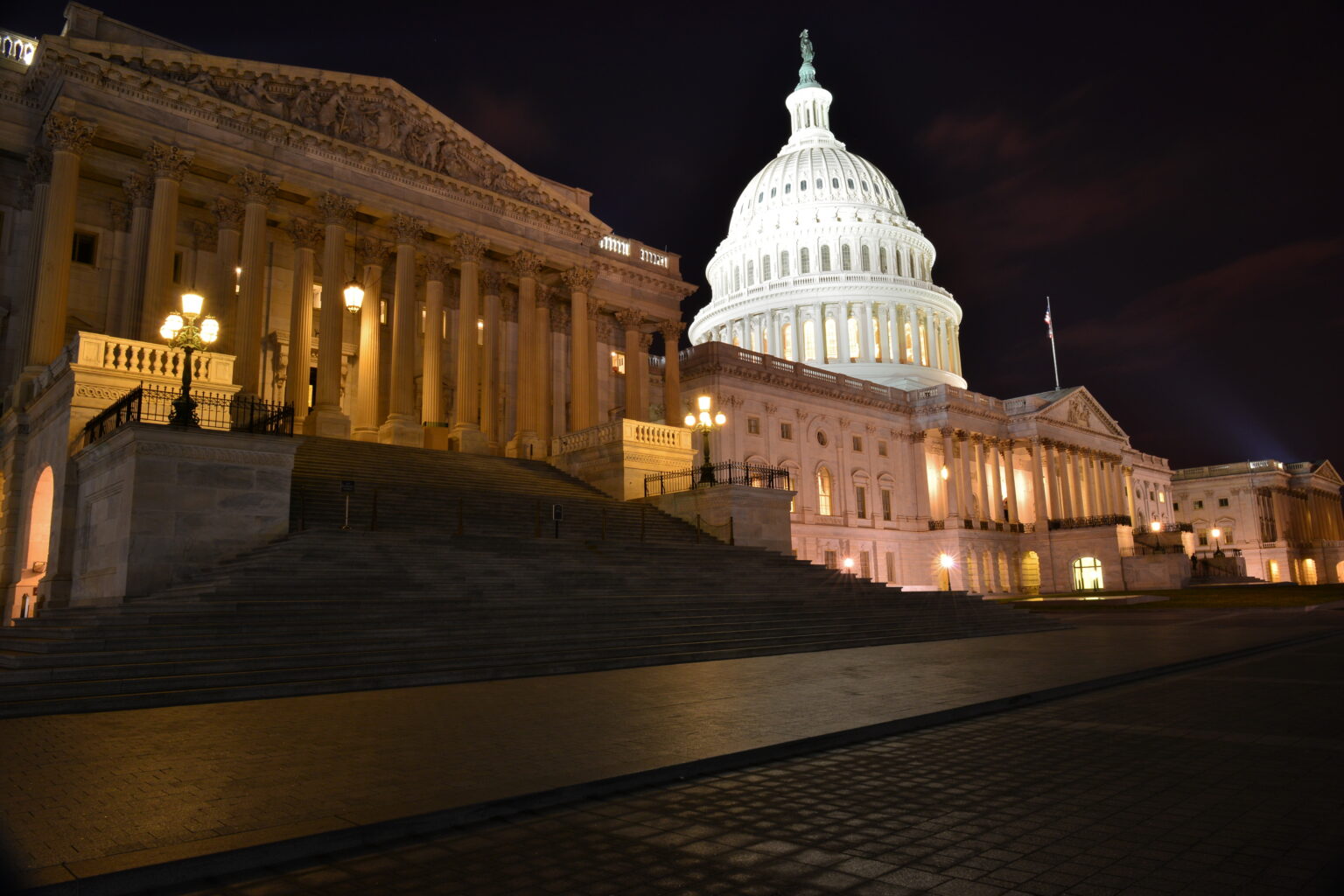
The Removal of SDoH from the 2026 Final Rule
The 2026 Medicare Physician Schedule Final Rule includes several distinct policy changes in which the Centers for Medicare & Medicaid Services (CMS) modifies how it

Well, it’s what we’ve all been waiting for…
In a late-night move last Wednesday, Nov. 12, President Trump signed the Continuing Appropriations Act (CAA) of 2026 into law, officially ending what had become the longest federal government shutdown in U.S. history.
The legislation, passed after weeks of tense negotiations, funds the federal government through Jan. 30, 2026, reverses layoffs that occurred after Oct. 1, and secures funding for key agencies for the remainder of the fiscal year.
Let’s dive into some of the key implications of the bill’s passage – as well as what was (and was not) included in the spending package.
The CAA delivers relief across several sectors, with healthcare emerging as a major focus. Among its notable provisions is a $14 million funding boost for implementation of the No Surprises Act (NSA), likely aimed at improving the government’s Independent Dispute Resolution (IDR) online portal. This overhaul was first proposed in a 2023 Centers for Medicare & Medicaid Services (CMS) rule, and the Trump Administration expects a final rule on these improvements to be published later this month.
Another critical measure retroactively extends Medicare telehealth flexibilities to cover services provided during the shutdown. Many Medicare beneficiaries were unable to access telehealth during the shutdown, while providers were forced to halt new virtual visits or assume financial risk, creating significant care gaps. Although the extension is welcome, having enjoyed bipartisan support since before the expiration, it’s a stopgap, lasting only until Jan. 30 of next year, when Congress will need to act again to prevent further disruption.
The CAA also restores funding for community health centers and increases Medicare ambulance payments, both of which expired at the end of September. These provisions, however, share the same short-term time frame, expiring at the end of January.
Of course, notably absent from the CAA is an extension of the Patient Protection and Affordable Care Act’s (PPACA’s) enhanced premium tax credits (PTCs), which help millions of consumers afford healthcare coverage, but expire at year’s end.
GOP leaders have pledged to hold a vote on extending the tax subsidies next month, but insiders suggest that the measure faces steep hurdles in the Senate and is unlikely to advance in the House. This omission has sparked concern among healthcare advocates and small businesses, as roughly one in five employees who work in small businesses rely on PPACA coverage.
Debate during the shutdown over the tax credits underscores broader ideological divides in Congress. During a recent hearing, Republican lawmakers argued that PPACA subsidies inflate costs and degrade coverage quality.
Meanwhile, President Trump floated an alternative approach last week: redirecting funds used for the subsidies directly to consumers, allowing them to choose their own healthcare rather than funneling money to what he called “money-sucking insurance companies.” Industry leaders, however, countered that health plans operate on razor-thin margins, with profits below 1 percent.
Experts warn that eliminating the subsidies without a viable replacement could trigger a “death spiral” in PPACA marketplaces, driving premiums higher and destabilizing coverage. Still, the Administration appears open to compromise, suggesting a willingness to explore options such as cost-sharing reductions and health savings accounts to soften the impact.
Regardless, the coming weeks will be pivotal. Committees in both chambers of Congress are already scheduling hearings on healthcare costs and care coordination, signaling that reform efforts will likely remain front and center. Bipartisan legislation to extend the premium tax credits for at least two years has also been introduced, though its prospects are currently uncertain.
For now, the 2026 CAA buys lawmakers time, but only temporarily. Without a long-term spending solution, we could be in exactly the same place as we just were: with a government shutdown, complete with expiring telehealth waivers, long lines at airports, and all the rest, at the end of January.
Stay tuned, because the next couple months should be very enlightening.


The 2026 Medicare Physician Schedule Final Rule includes several distinct policy changes in which the Centers for Medicare & Medicaid Services (CMS) modifies how it

As discussed in my prior articles, Medicare Advantage (MA) organization payments incorporate a beneficiary’s health risk, as determined by diagnoses that map to Centers for
Please log in to your account to comment on this article.

Accurately determining the principal diagnosis is critical for compliant billing, appropriate reimbursement, and valid quality reporting — yet it remains one of the most subjective and error-prone areas in inpatient coding. In this expert-led session, Cheryl Ericson, RN, MS, CCDS, CDIP, demystifies the complexities of principal diagnosis assignment, bridging the gap between coding rules and clinical reality. Learn how to strengthen your organization’s coding accuracy, reduce denials, and ensure your documentation supports true medical necessity.

Denials continue to delay reimbursement, increase administrative burden, and threaten financial stability across healthcare organizations. This essential webcast tackles the root causes—rising payer scrutiny, fragmented workflows, inconsistent documentation, and underused analytics—and offers proven, data-driven strategies to prevent and overturn denials. Attendees will gain practical tools to strengthen documentation and coding accuracy, engage clinicians effectively, and leverage predictive analytics and AI to identify risks before they impact revenue. Through real-world case examples and actionable guidance, this session empowers coding, CDI, and revenue cycle professionals to shift from reactive appeals to proactive denial prevention and revenue protection.

Sepsis remains one of the most frequently denied and contested diagnoses, creating costly revenue loss and compliance risks. In this webcast, Angela Comfort, DBA, MBA, RHIA, CDIP, CCS, CCS-P, provides practical, real-world strategies to align documentation with coding guidelines, reconcile Sepsis-2 and Sepsis-3 definitions, and apply compliant queries. You’ll learn how to identify and address documentation gaps, strengthen provider engagement, and defend diagnoses against payer scrutiny—equipping you to protect reimbursement, improve SOI/ROM capture, and reduce audit vulnerability in this high-risk area.

Only ICD10monitor delivers what you need: updates on must-know changes associated with the FY26 IPPS, including new ICD-10-CM/PCS codes, CCs/MCCs, and MS-DRGs, plus insights, analysis and answers to your questions from two of the country’s most respected subject matter experts.

Get clear, practical answers to Medicare’s most confusing regulations. Join Dr. Ronald Hirsch as he breaks down real-world compliance challenges and shares guidance your team can apply right away.

Federal auditors are zeroing in on Inpatient Rehabilitation Facility (IRF) and hospital rehab unit services, with OIG and CERT audits leading to millions in penalties—often due to documentation and administrative errors, not quality of care. Join compliance expert Michael Calahan, PA, MBA, to learn the five clinical “pillars” of IRF-PPS admissions, key documentation requirements, and real-life case lessons to help protect your revenue.

During this essential RACmonitor webcast Michael Calahan, PA, MBA Certified Compliance Officer, will clarify the rules, dispel common misconceptions, and equip you with practical strategies to code, document, and bill high-risk split/shared, incident-to & critical care E/M services with confidence. Don’t let audit risks or revenue losses catch your organization off guard — learn exactly what federal auditors are looking for and how to ensure your documentation and reporting stand up to scrutiny.

Learn how to navigate the proposed elimination of the Inpatient-Only list. Gain strategies to assess admission status, avoid denials, protect compliance, and address impacts across Medicare and non-Medicare payors. Essential insights for hospitals.
Happy National Doctor’s Day! Learn how to get a complimentary webcast on ‘Decoding Social Admissions’ as a token of our heartfelt appreciation! Click here to learn more →
CYBER WEEK IS HERE! Don’t miss your chance to get 20% off now until Dec. 2 with code CYBER24